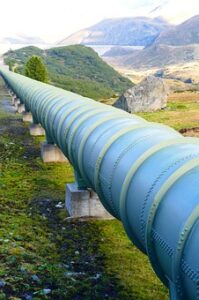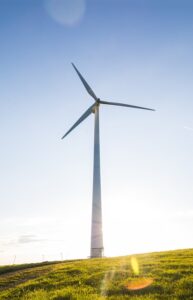The infrastructure of modern cities is becoming increasingly more complex; it includes roads, pavements, railways, tunnels, and ducts. These structures are not only made of composite materials in which behavior under harsh environments can often be unpredictable, but they also interconnect. These systems are subjected to extreme environmental conditions, like severe winds, earthquakes, flooding, etc.; due to this, they are susceptible to catastrophic failure.
One of the main aspects of any smart city is safety. The transportation network needs to be assessed through gathering data on roadway conditions, like dangerous conditions due to roadway degradation, icing, and hydroplaning. Autonomous data gathering is vital for the safety and efficiency of the transportation network. The data gathered gives information on the inevitable roadway and infrastructure degradation over time, which enables informed decisions for life extension or timely replacement of these critical systems.
Computational tools are often not adequate for the task of condition assessment of complex infrastructure systems. These tools lack the capability to reliably predict response to extreme events. Therefore, a distributed sensor system is needed in order to ensure the safety and longevity of infrastructures in a smart city. The sensing system should also be capable of providing critical information to computational models to enable informed maintenance planning as opposed to the reactive maintenance schemes currently employed.
Fiber optic sensing systems provide the most efficient and economical solution. Fiber optic systems allow for the assessment of thousands of sensors in real-time on a single cable. FBG sensor systems are well-suited to the detection and recording
of critical structural response characteristics as well as environmental indicators that lead to degradation. FBG strain sensors are useful in the process of assessing the response to stressors, e.g. traffic, wind, earthquakes, blast events, support settlement, etc. Distributed acoustic sensing is ideal for the direct assessment of localized damage in steel and reinforced concrete that may occur due to seismic events, fatigue cracking, corrosion, etc. FBG sensors are also ideal for monitoring of weather conditions, as the presence of entrapped moisture in asphalt paving systems, as they are often the main cause of the rapid degradation.
Optromix is a fast-growing vendor of fiber Bragg grating (FBG) products line: FBG sensors, FBG interrogators, and multiplexers, Distributed Temperature Sensing (DTS) systems. We create and supply a broad variety of top-notch fiber optic solutions for the monitoring of various facilities all over the world. We provide a distributed acoustic sensing system that is much less expensive than other analogous systems present on the market.
If you are interested in Optromix distributed acoustic sensing system or Optromix FBG sensor systems, please contact us at info@optromix.com


 A traditional way of monitoring structural health is through the use of piezoelectric transducers; these devices convert pressure to an electric voltage. Transducers are reliable and accurate in most working conditions except in cases of corrosive environments or under high temperatures, above 300° Celsius. Harsh conditions influence reliability. accuracy, and usefulness of transducers in a negative way.
A traditional way of monitoring structural health is through the use of piezoelectric transducers; these devices convert pressure to an electric voltage. Transducers are reliable and accurate in most working conditions except in cases of corrosive environments or under high temperatures, above 300° Celsius. Harsh conditions influence reliability. accuracy, and usefulness of transducers in a negative way. The increased demand for energy due to the growing population has forced the industry to develop new sustainable ways to produce energy. Among new and developing energy technologies are wind turbines. They are widely used to produce energy in many parts of the world. However, there are multiple concerns that are yet to be solved, one of them has been the lack of effective monitoring devices and techniques.
The increased demand for energy due to the growing population has forced the industry to develop new sustainable ways to produce energy. Among new and developing energy technologies are wind turbines. They are widely used to produce energy in many parts of the world. However, there are multiple concerns that are yet to be solved, one of them has been the lack of effective monitoring devices and techniques.  The demand for data is growing exponentially, piling pressure on networks to deliver more data, faster, over longer distances.
The demand for data is growing exponentially, piling pressure on networks to deliver more data, faster, over longer distances.  Recent events in the nuclear industry have shown the weaknesses in the control of the critical systems that ensure the safety of the nuclear plant. The extreme and accidental conditions, such as high temperatures and high levels of radiation sabotage the security of nuclear power plants, leading to major disasters. The main issue for the nuclear industry is to enhance the security of existing nuclear power plants and improve the design of the future ones. In the case of emergency or accidental conditions in nuclear reactors the following thermodynamic parameters need to be known in order to facilitate appropriate actions: temperature, pressure, water level, radiation level. The accuracy of the obtained information directly influences the decisions made by the operators. The monitoring instruments used inside the nuclear fuel pools need to better withstand severe conditions that occur during malfunctions and accidents, namely high temperatures and high levels of radiation. The strict safety regulations have pushed the fiber optic market to develop sensors based on optical fibers. Optical fiber sensors, like
Recent events in the nuclear industry have shown the weaknesses in the control of the critical systems that ensure the safety of the nuclear plant. The extreme and accidental conditions, such as high temperatures and high levels of radiation sabotage the security of nuclear power plants, leading to major disasters. The main issue for the nuclear industry is to enhance the security of existing nuclear power plants and improve the design of the future ones. In the case of emergency or accidental conditions in nuclear reactors the following thermodynamic parameters need to be known in order to facilitate appropriate actions: temperature, pressure, water level, radiation level. The accuracy of the obtained information directly influences the decisions made by the operators. The monitoring instruments used inside the nuclear fuel pools need to better withstand severe conditions that occur during malfunctions and accidents, namely high temperatures and high levels of radiation. The strict safety regulations have pushed the fiber optic market to develop sensors based on optical fibers. Optical fiber sensors, like  Strain measurement is imperative during prototype design and testing. Strain measurements ensure that materials perform as they should and that the equipment is safe and durable. Measuring strain is crucial for testing complex structures, like aircraft, turbines, etc. There are multiple ways in which stress can be measured; however, it is widely accepted that
Strain measurement is imperative during prototype design and testing. Strain measurements ensure that materials perform as they should and that the equipment is safe and durable. Measuring strain is crucial for testing complex structures, like aircraft, turbines, etc. There are multiple ways in which stress can be measured; however, it is widely accepted that All engineering infrastructures undergo aging. The damage that appears over time is a consequence of the loads applied to them, therefore regular maintenance actions are required in order to predict the lifetime of these structures and lengthen it, which, in turn, will aid in avoiding catastrophic failures. Aviation-related infrastructures demand the highest levels of damage detection as these structures are overwhelmingly built according to a damage-tolerant principle. The structures for aerospace are designed to withstand damages with certain characteristics. Damage-tolerant design involves considerable effort for structure inspection. The inspections and maintenance tasks need to be periodic and scheduled; these are essential for safe and efficient operations.
All engineering infrastructures undergo aging. The damage that appears over time is a consequence of the loads applied to them, therefore regular maintenance actions are required in order to predict the lifetime of these structures and lengthen it, which, in turn, will aid in avoiding catastrophic failures. Aviation-related infrastructures demand the highest levels of damage detection as these structures are overwhelmingly built according to a damage-tolerant principle. The structures for aerospace are designed to withstand damages with certain characteristics. Damage-tolerant design involves considerable effort for structure inspection. The inspections and maintenance tasks need to be periodic and scheduled; these are essential for safe and efficient operations.